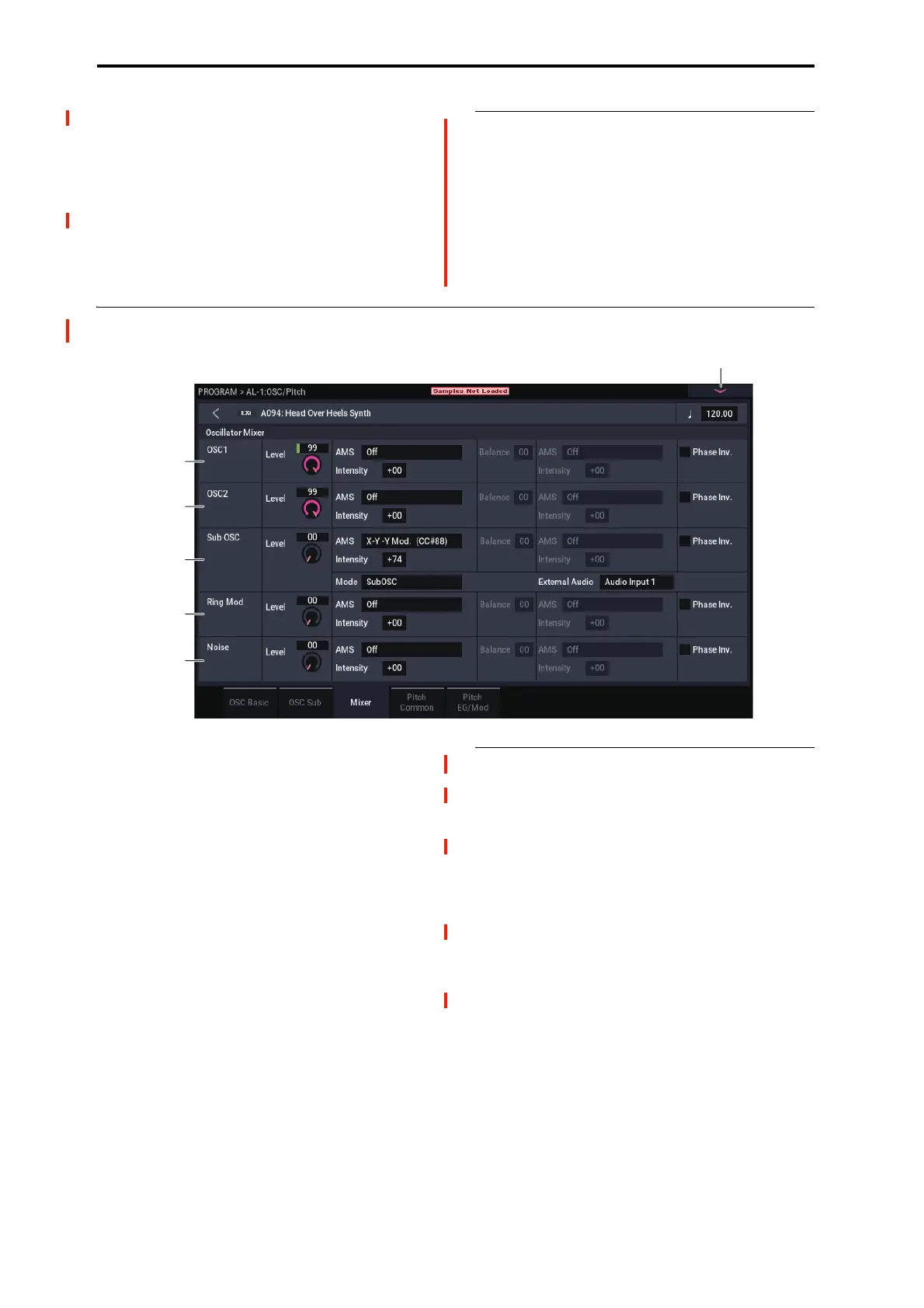EXi: AL-1 Analog Synthesizer
148
Saturation [0…99]
This control clips the noise signal, for added crunch. Subtle
variations in saturation are more noticeable with very low
Filter Frequency settings (see below), allowing you to
create organic, rumbling timbres.
Filter Frequency [0…99]
This is a simple, 1-pole lowpass filter for controlling the
“color” of the noise.
v
4–2: Page Menu Commands
• Compare →p.112
• Write Program →p.112
• Exclusive Solo →p.113
• PAGE →p.126
•MODE →p.126
4–3: Mixer
The Mixer page controls the volume levels for the five main
parts of the Oscillator, and also controls the routing to the
filter section. For instance, you can:
• Control the volume levels for Oscillator 1, Oscillator 2,
the Sub Oscillator (or an Audio Input), the Ring
Modulator, and the Noise Generator.
• Modulate these volume levels via AMS.
•When the Filter Routing is set to either Serial or
Parallel, you can route each of the five Oscillator
elements through Filter A, Filter B, or a combination of
the two - and then modulate that routing via AMS.
• Select an audio input to route through the filters, driver,
ring modulator, and effects.
4–3a: OSC1
Level [0…99]
This controls the volume level for Oscillator 1.
AMS [List of AMS Sources]
This selects an AMS source to control the Oscillator 1
Level. For a list of AMS sources, see “Alternate Modulation
Source (AMS) List” on page 901.
Intensity [–99…+99]
This controls the depth and direction of the Oscillator 1
Level AMS modulation.
Balance [0…99]
This controls the filter routing for Oscillator 1. It applies
only when the Filter Routing is set to either Serial or
Parallel; otherwise, it is grayed out.
0 is the default, and means that Oscillator 1 goes into Filter
A. If the Filter Routing is set to Serial, it will also pass
through Filter B.
99 means that Oscillator 1 goes into Filter B.
In between, the oscillator will go to a combination of both
filters. By modulating the Balance via AMS, you can
crossfade between routing through Filter A and Filter B. For
more information, see “Interaction between the filters and
the mixer,” on page 154.
4–3PMC
4–3a
4–3c
4–3d
4–3e
4–3b

